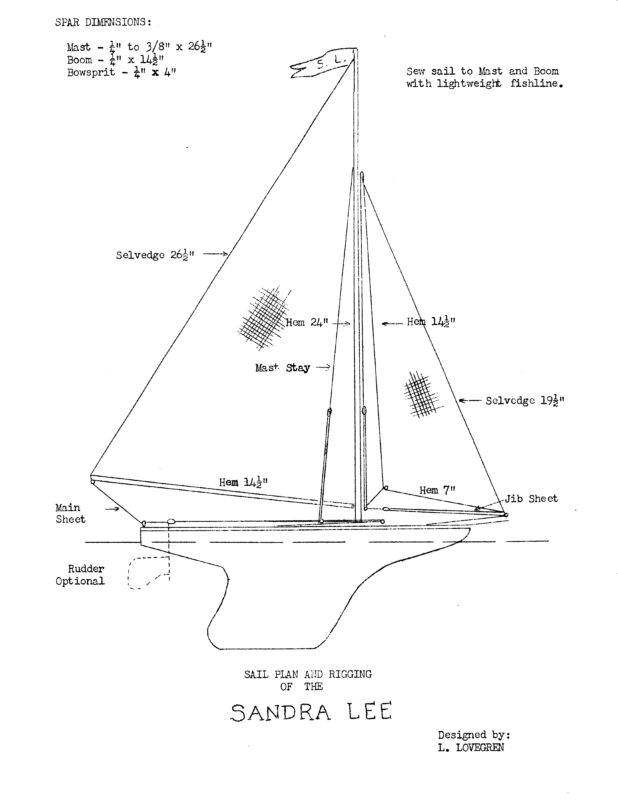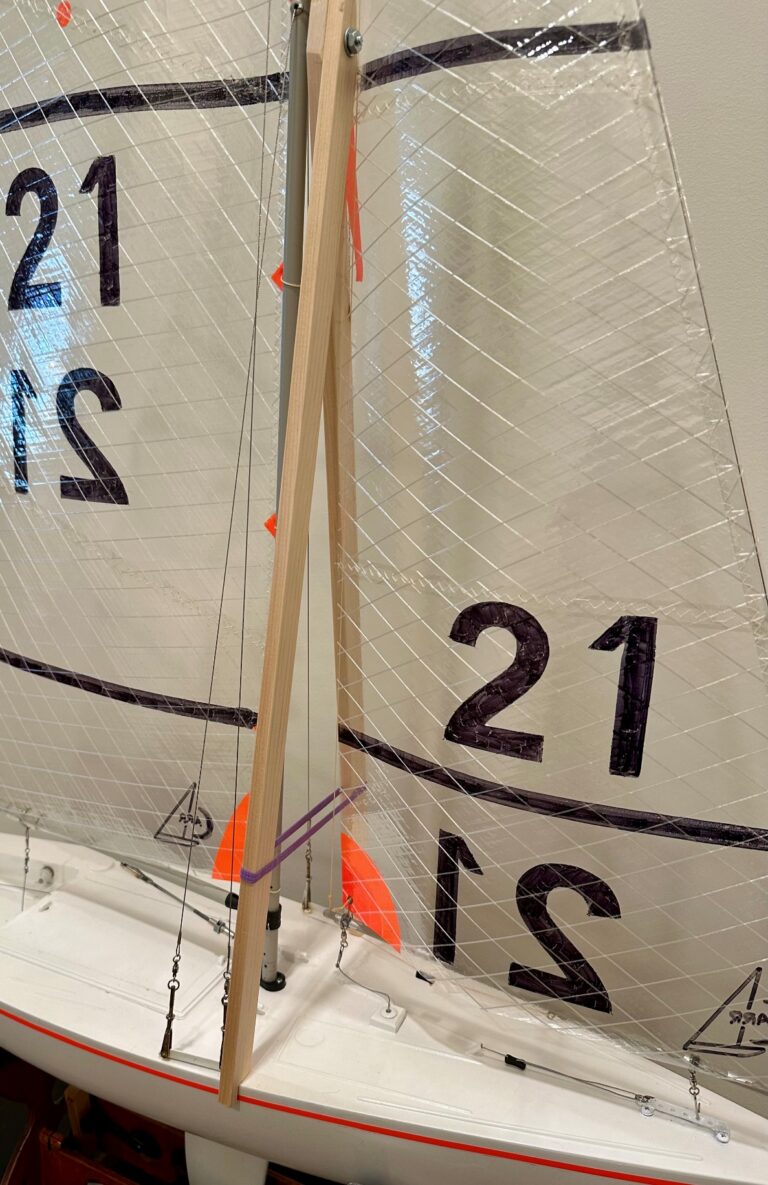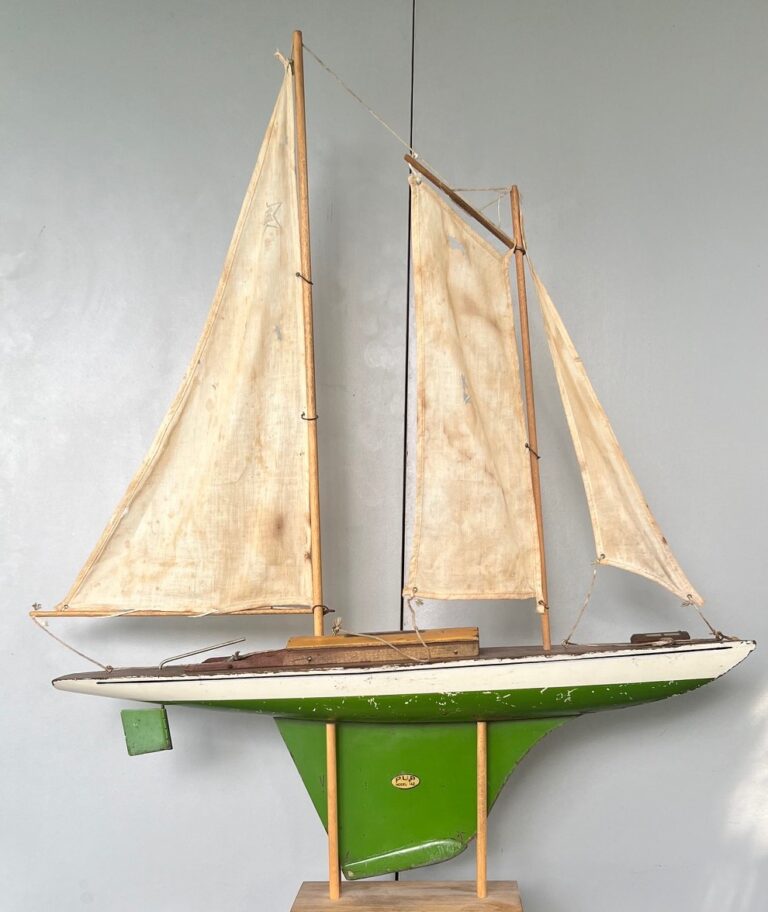by Paul Staiger
Up through the 1950s the Portland Public Schools were divided in to grade schools (K- 8) and high schools. In grade school, in the seventh and eighth grade, the boys took shop and the girls took home economics. For the boys this meant woodworking the first year, then leather and other crafts the next. These classes met once a day for an hour.
The first half of the first year was spent, for the boys, learning to use the tools on increasingly difficult projects – the first as I remember was a little peg-board game – leading us to the project that would occupy the whole of the second semester of the seventh grade: a sailboat. [1]

We had a choice of making an 18-, 24-, 30-, 36-, or 50-inch boat. I was the only one my year (1952-3) to opt for a Marblehead – a Gus Lassel Sun-Kiss design, the plans provided by the teacher, Mr. Laurence Lovegren. The smaller boats were made based on plans Mr. Lovegren had drawn up himself for the Sandra Lee (at the time I don’t remember knowing the name). How much the Sandra Lee owes a debt to the Porty – or vice versa – I can’t say; at the time I wasn’t interested in history, just boat building.
There were three seventh grade classes at our school, Beaumont, and for each class Mr. Lovegren would make an 18-inch boat. He would spend perhaps the first ten minutes of the period showing us the various steps, which we viewed from two elevated wooden benches with a low wall in front. The teacher’s work-table was right in front of this gallery.
I can still remember the awe I felt watching Mr. Lovegren build his example. Every motion seemed effortless; every cut, every stroke, just right. It seemed like magic. I don’t know how many Sandra Lees he made over the years, but each one must have been perfect. After the techniques for the day had been demonstrated, we would head to our work-tables and try to keep up. My Sun-Kiss was made as the smaller boats were made: cut, planed, and gouged from a single piece of wood – in my case three pieces of white pine glued together to form one block. Because of its size the profile of the Marblehead had to be cut on a band-saw, something the grade school didn’t have. (In fact, students couldn’t use the one power tool the shop-room had: a table saw.) I can remember driving with Mr. Lovegren after school, in his 1950 Ford station wagon, down to Grant High where he cut the profile. Had this not been done by him I would have gotten nowhere.
In the Beaumont shop-room we had fine work-tables – two students to a table – and a locker full of quality hand tools. We also had a gas burner for melting lead, and a “sandbox” for casting the keels’ weights. The one tool I remember using the most was the hand gouge; there was an awful lot of white pine to scoop out. Of course this method did not produce the lightest hulls – mine weighs just under 23 pounds.
Because this was a public school project, costs had to be kept at a minimum so everybody would have a chance to make a boat. So the rigging for the Sandra Lee was pretty basic. In fact, the girls made the sails in their home economics class (how times have changed). And the bowsers were made by cutting a toothbrush handle cross-wise into 1/8-inch sections, then drilling three holes in these for the line.

Most who built the Sandra Lees chose to fit them with the optional rudder, and there was some connection between the sails and the rudder, but I’ve forgotten how this was done. (It couldn’t have been a full-blown Braine system.) For my Sun-Kiss, I was able to buy sails (“made by W G Bithell”) and a Lassel vane and sliding rig from a student who had not finished his boat the year before. Looking back on it, I wish I had found out more about where all this came from – did the student buy it directly from Lassel? – but that was the least of my worries at the time: I was trying to get it done.
When the boats were finished in the spring there was a regatta at Westmoreland pond in south east Portland, pitting school against school. Awards were given for workmanship and for sailing, though the racing was quite scaled down: We just went across the wind on a reach. (Given that most boats didn’t have much of a steering system, this was an accomplishment in itself.)
After leaving Beaumont I lost track of Mr. Lovegren, though I was told by my younger sister that he kept a picture of me with the Sun-Kiss in a little display window by the shop-room door for a few years, trying, I’m sure, to get someone else to tackle a Marblehead. And I hope it worked.
But more important would have to be the innumerable variations on the Sandra Lee that were built and sailed over the years. And what was learned from the experience – and the teacher.
[1] There was no set shop curriculum for the school system; it was up to each teacher to plan the class. And in fact there were not that many schools where boats were built – maybe half a dozen. — PS.



